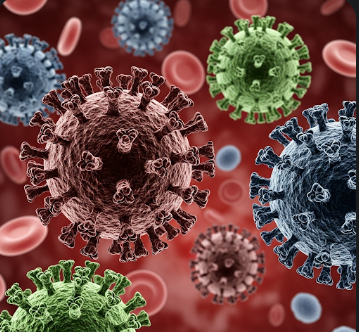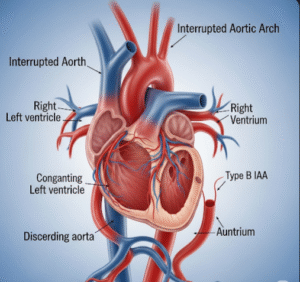Overview
Blood-borne viruses (BBVs) are viruses that spread primarily through contact with infected blood or other body fluids, including semen and vaginal secretions. These infections pose a significant public health concern worldwide, including in Korea, due to their potential to cause chronic disease, liver damage, immune suppression, and long-term health complications.
Korean healthcare systems emphasize early detection, vaccination programs, safe medical practices, and antiviral treatments to manage and prevent BBV transmission. Hospitals and clinics provide screening, counseling, and advanced therapies, ensuring patients receive comprehensive care.
What is a Blood-Borne Virus (BBV)?
A blood-borne virus is a pathogen that enters the body through direct contact with infected blood or fluids, often targeting specific organs or systems. The most common BBVs include:
- Hepatitis B virus (HBV): Affects the liver and can cause chronic hepatitis, cirrhosis, or liver cancer
- Hepatitis C virus (HCV): Chronic liver infection leading to fibrosis, cirrhosis, or hepatocellular carcinoma
- Human Immunodeficiency Virus (HIV): Attacks the immune system, potentially progressing to AIDS
- Other viruses: Less commonly transmitted BBVs include human T-cell lymphotropic virus (HTLV)
BBVs are primarily spread through:
- Contaminated needles or syringes
- Blood transfusions or organ transplants from infected donors
- Unprotected sexual contact with infected individuals
- Vertical transmission from mother to child during childbirth or breastfeeding
Symptoms
Symptoms of BBV infections vary depending on the virus, stage of infection, and individual response:
Hepatitis B and C:
- Fatigue
- Abdominal pain or discomfort
- Nausea and vomiting
- Loss of appetite
- Jaundice (yellowing of skin and eyes)
- Dark urine or pale stools
- Mild fever or flu-like symptoms
HIV:
- Acute infection may cause fever, sore throat, rash, and swollen lymph nodes
- Chronic infection can remain asymptomatic for years
- Progression to AIDS includes recurrent infections, weight loss, night sweats, and opportunistic infections
Many BBV infections are asymptomatic during early stages, making routine screening critical for early diagnosis and management.
Causes
BBVs are caused by specific viruses transmitted through blood and bodily fluids:
Hepatitis B virus (HBV):
- Spread via blood, sexual contact, or perinatal transmission
- Highly infectious and preventable by vaccination
Hepatitis C virus (HCV):
- Spread primarily through blood-to-blood contact
- Common causes include contaminated needles or untested blood products
Human Immunodeficiency Virus (HIV):
- Spread through blood, sexual contact, or mother-to-child transmission
- Attacks immune cells, weakening the body’s defense mechanisms
Other contributing factors:
- Shared or improperly sterilized medical equipment
- Tattoos or piercings with non-sterile instruments
- Occupational exposure in healthcare settings
- Injection drug use with shared needles
Risk Factors
- Unprotected sexual activity with infected individuals
- Injection drug use with shared needles
- Healthcare exposure: Needlestick injuries or contaminated medical instruments
- Blood transfusions in regions without stringent screening
- Mother-to-child transmission during pregnancy, childbirth, or breastfeeding
- Travel to areas with high prevalence of BBVs
- Multiple sexual partners without barrier protection
Complications
Untreated BBV infections can lead to serious long-term health problems:
- Liver disease: Chronic hepatitis, cirrhosis, and hepatocellular carcinoma (HBV and HCV)
- Immune system suppression: Opportunistic infections and cancers (HIV)
- Organ failure: Advanced liver disease or immune complications
- Co-infections: Simultaneous infection with multiple BBVs, worsening outcomes
- Transmission to others: High risk of spreading infection to family, partners, or community
Prevention
Preventive strategies focus on vaccination, safe practices, and awareness:
- Vaccination: Hepatitis B vaccine is widely available and effective
- Safe injection practices: Use of sterile needles and syringes
- Screening of blood products: Ensures safe transfusions and organ transplants
- Condom use: Reduces risk of sexual transmission
- Avoid sharing personal items: Razors, toothbrushes, or needles
- Occupational safety: Protective equipment for healthcare workers
- Regular testing: Especially for high-risk groups, including pregnant women, healthcare workers, and injection drug users
Treatment Options in Korea
Diagnosis
Korean hospitals provide comprehensive diagnostic testing to detect BBVs early:
- Blood tests: Serological tests for antibodies or viral antigens
- Polymerase chain reaction (PCR): Detects viral RNA or DNA and quantifies viral load
- Liver function tests: Assess liver health in HBV and HCV infections
- CD4 count and viral load: Monitors HIV progression and treatment response
Medical Management
- Antiviral therapy: Highly effective treatments for HBV, HCV, and HIV
- HBV: Nucleoside/nucleotide analogues to suppress viral replication
- HCV: Direct-acting antivirals (DAAs) with high cure rates
- HIV: Antiretroviral therapy (ART) to control viral load and prevent progression to AIDS
- Monitoring and follow-up: Regular testing to assess treatment response and detect complications
- Management of co-infections: Addressing additional infections or liver complications
Supportive Care
- Counseling and education: Promote adherence to therapy and reduce transmission risk
- Nutritional support: Maintain immune health and manage liver disease
- Psychological support: Address anxiety, depression, or stigma associated with BBVs
- Rehabilitation and lifestyle guidance: Encourage safe behaviors, healthy diet, and regular medical check-ups
Prognosis
The prognosis for BBV infections in Korea depends on early detection, type of virus, and treatment adherence:
- Hepatitis B: Chronic infection can be managed with antiviral therapy; vaccination prevents new infections
- Hepatitis C: Highly curable with direct-acting antivirals, improving long-term liver health
- HIV: With consistent antiretroviral therapy, individuals can live long, healthy lives and reduce transmission risk
- Early diagnosis and management significantly reduce complications, improve quality of life, and prevent further spread













